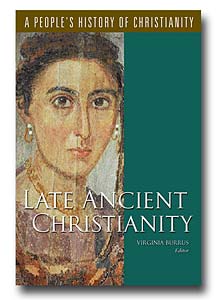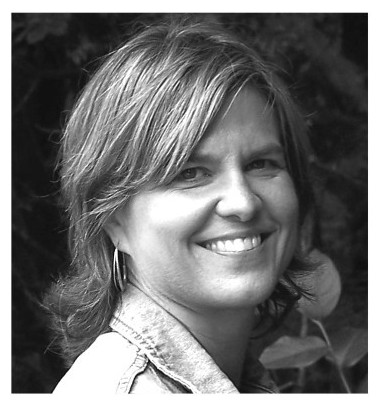Virginia Burrus: Late Ancient Christianity
 Virginia Burrus, ed., Late Ancient Christianity,A People’s History of Christianity, Vol. 2 (Minneapolis, Minn.: Fortress, 2005), 318 pages.
Virginia Burrus, ed., Late Ancient Christianity,A People’s History of Christianity, Vol. 2 (Minneapolis, Minn.: Fortress, 2005), 318 pages.
The editorial team of the series entitled A People’s History of Christianity has endeavored to tell the story of Christianity through the eyes of the common person, rather than through the eyes of kings, conquerors, popes, or bishops. In this second volume, they attempt to tell the story of the early church through the eyes of those whose doctrine may not have measured up to the standard of orthodox belief; they were on the fringe of what later became defined as catholic orthodoxy. The goal of opening the scope of history, to tell the story from the “bottom up” rather than from the “top down” is one that is worthwhile. The challenge of the researcher is to discover reliable sources whereby one might piece together the history; the challenge of the reader is to discern where to draw the line between speculation and verity. The first volume explored first century Galilee, the world into which Jesus Christ was born and the second volume examines the first centuries of the church—the period of the Church Fathers—late ancient Christianity.
Much of the research for this second volume appears to be done by implication—discerning what motivated the Church Fathers to write against various “heresies.” For example, if the Apostle Paul wrote words of reprimand to the Corinthian church it is implicit that there were people in the church that were practicing something of theological error. Likewise, the researchers of the People’s History series have taken the words written by the Church Fathers of the first centuries and have lifted from their rebukes to the church alleged evidence of the non-standard beliefs—the unorthodox theology—of the early church. This evidence was then verified by the archeological evidence of the same time-period. The authors have uncovered some intriguing theories of how multiple variations of belief intertwined with local culture and habits retained from pagan religions. They have laid before the reader several scenarios of the internal strife of the late ancient church, with the challenges of new converts and new churches, distance and slow communication, church politics and Rome.

Late Ancient Christianity editor, Virginia Burrus, is Professor of Early Church History at Drew University in Madison, NJ.
Contributing author, David Frankfurter, summarized the process in the chapter he contributed. He said, “When we write appreciatively about saint cults, shrines, iconography, or magic, are we merely carrying on those elitist, early Protestant prejudices in different guise—as historical voyeurism or nostalgic inversion, championing the popular as authentic and shunning the elite as—well, elite?” (256). The challenge that he is pointing to is one of seeing through lenses untainted by our own traditions, teachings, or biases.
Reading this book with pastoral lenses will permit one to see parallel problems between the late ancient church and the church of our day. In one way, the book seems to be, as Frankfurter said “voyeuristic” of another time—with no attempt to interpret—leaving the readers free to make their own interpretation. It serves to remind us that there is nothing new under the sun, particularly in view of heresy—all distortions of orthodox belief continue to assault the church—and that it is profitable to know how the church Fathers dealt with similar problems. It is equally fascinating to speculate about the diversity of the late ancient church and to be freshly challenged about the variety of beliefs held by our early church forbearers.
Category: Church History, Fall 2007


